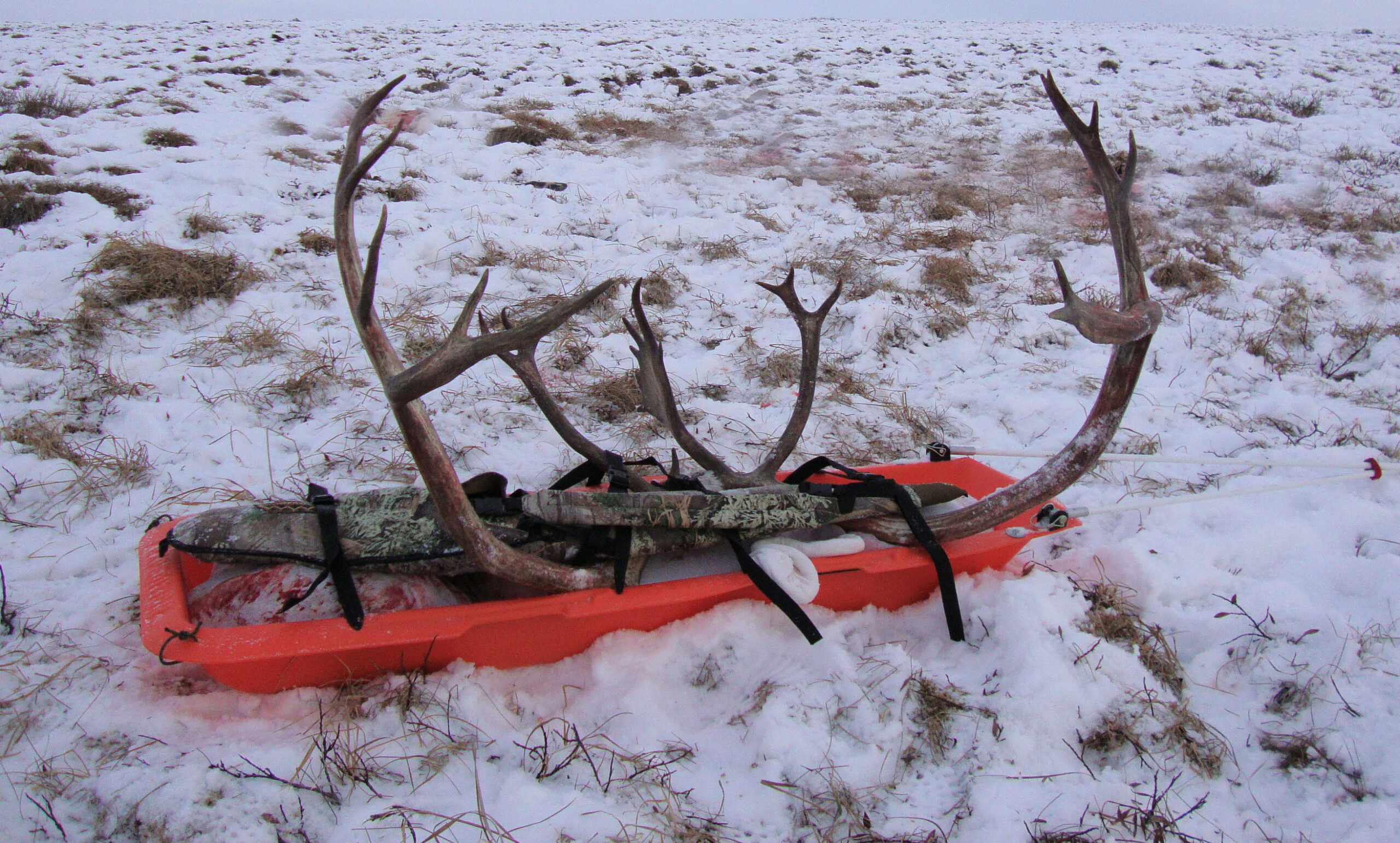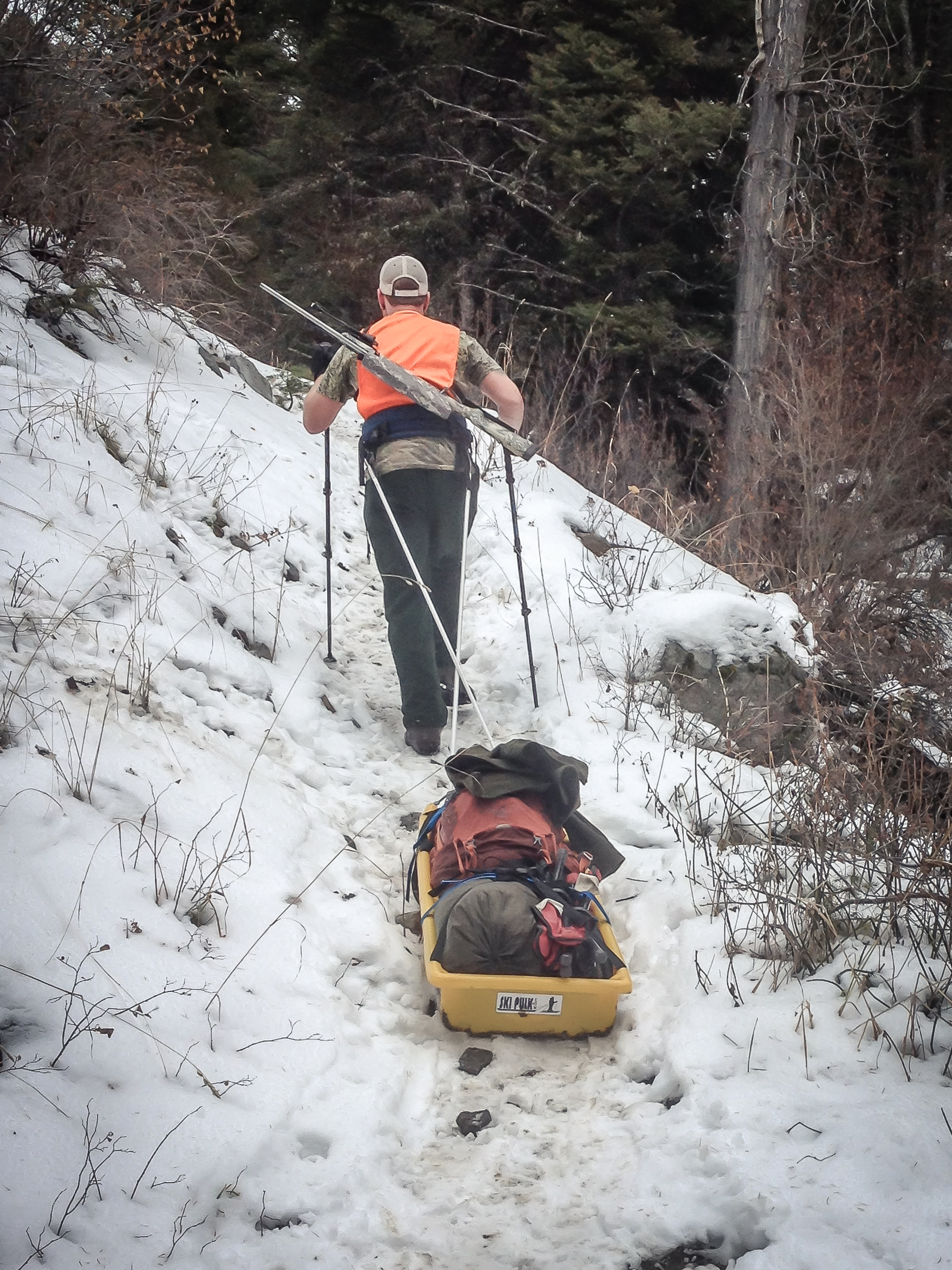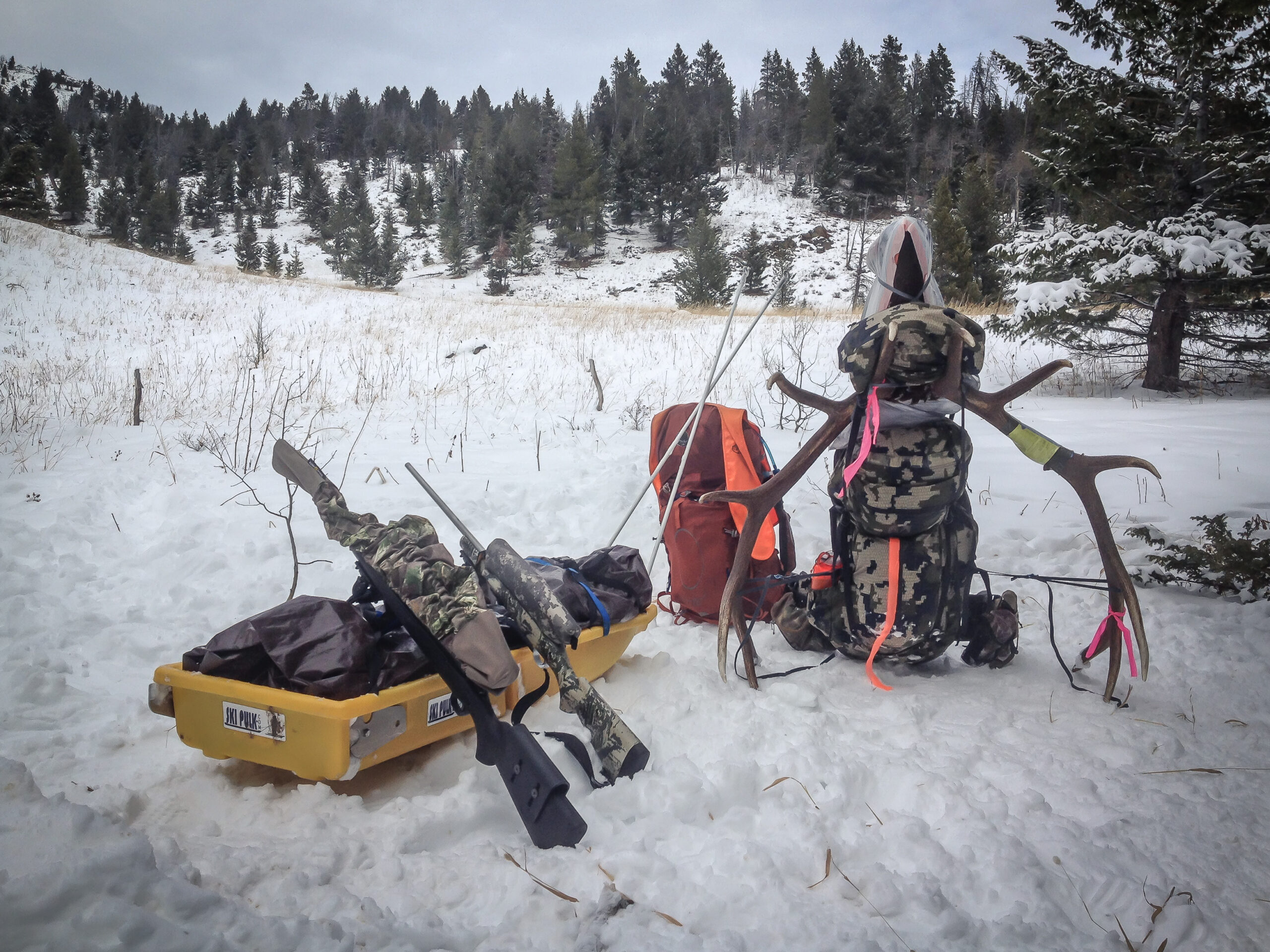Using a Pulk as a Game Sled
Many people have found that they can take some of the work out of their elk, moose, deer or caribou hunt by using a pulk sled as a game carrier.
Why use a pulk sled for backcountry hunting?
- You’ll be able to haul more weight than just a backpack by sliding it on the snow/ground versus carrying it all on your shoulders.
- You will be able to take fewer trips back to your vehicle.
- Depending on the terrain, a pulk may be easier to navigate than other methods.
- You can use it to haul more comforts to stay longer or go further into the backcountry.
- You can use it to haul emergency gear in case of an unexpected overnight if you’re hunting in the snow.
What to look for in a game drag sled:
- Sides on the sled are practical if you aren’t quartering the animal. This will keep the game inside the sled so no limbs are dragging and adding to the weight.
- A durable, comfortable harness will make pulling the sled much easier. We’d recommend our Expedition Harness for hauling heavy loads when hunting.
- A good sled connection point at your hip is essential to control the load.
- Poles to connect your sled to your harness in place of rope are beneficial to keep the sled tracking behind you in trees or hilly terrain. Find our full length poles here.
- A sled that is long enough to keep the center of gravity low, but not too long so it’s hard to maneuver in trees and on hills.
- A sled that is the same width as your track will pull much easier than a wider sled in snow.
- We created the Clipper XL (62″L x 18″W x 7″H) long enough to fit all your gear and narrow enough to pull easily in your tracks but not tip. It has an optional cover and retractable fins for better control.
- Many people like to use the Jet Sled Jr (42″L x 21″W x 8″H) or the Jet Sled (54″L x 25″W x 10″H) for their deer drag sled.
- The Paris Expedition (59″L x 20″W x 6″H) or the Emsco Beast (66”L x 19”W) are also options for hunting sleds.
Here is a review from Rob who used SkiPulk.com poles on his diy homemade game drag sled:
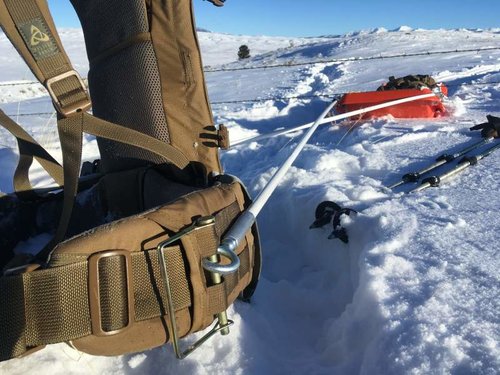
I got a chance to try these poles from skipulk.com yesterday hauling out about 180# of elk and gear in my game sled. The poles attach to a waist belt and make the job much easier. It turned out that a 5/16 x 3 1/2″ PTO pin worked well enough to attach them to my Mystery Ranch frame without modification. After using the poles I think they are the best $ I’ve spent. When crossed they even controlled the sled on side hills.
I use this meat sled a lot, but pulling it with a rope is more work than necessary.
On snow it isn’t much work at all to pull and the poles make it easier to control the sled and give your arms a break. Dragging an entire elk on the sled is less work than a single trip with 1/4 of it on your back. Even on dry ground it is easier than dragging out a whole deer, but depending on the circumstances may be more work than boning it in the field and packing it out on the return trip. You also have to count the trip back to the truck to get the sled.
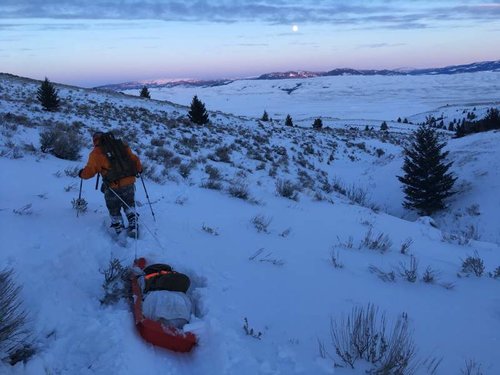
It handles sidehills pretty well without assistance, at least in the deeper snow. I did a sidehill much steeper than the last photo. The poles flex a lot, but kept it tracking straight. You want to keep the center of gravity as low as possible to keep it from tipping.
After rereading the instructions it would have worked even better had I used the included velcro strap to keep the poles together at the crossing point. Installing fins on the sled would also help.
Find Rob’s Facebook post on his trip here where he used poles attached to his pack to haul out his game sled.
We each dragged out an entire caribou (field dressed and quartered but with antlers) more than 5 miles across the arctic tundra. This was about as much weight as a guy can conceivably pull. Despite banging into tussocks and hauling across patches of bare ground, the harness assembly showed no wear and the pulks performed admirably (although the men were toast). Cheers – John
